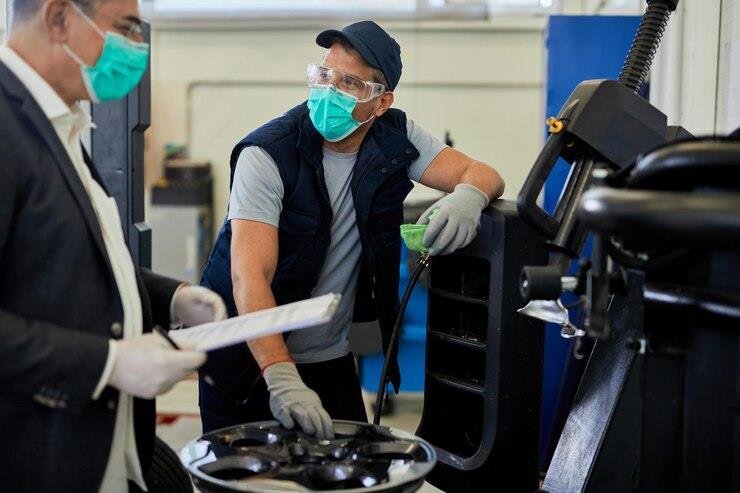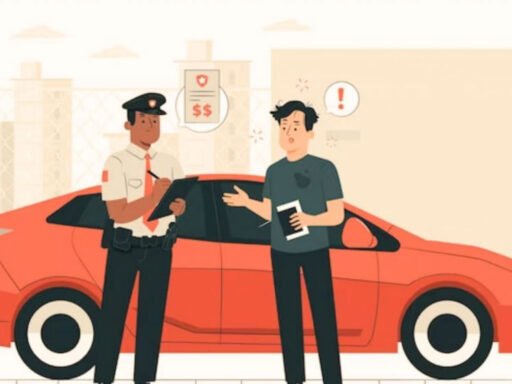You’ve worked long and hard to buy your car. And the last thing you want is for it to get damaged. So the best thing to do is to protect your automobile from dents and dings. It not only preserves the aesthetic appeal of your vehicle but also helps maintain its value and avoid costly repairs.
If you’re looking for practical tips to prevent your car from getting damaged, this blog is for you. We’ll explore effective ways to ensure your vehicle remains in excellent condition and continues to serve you well for years to come.
1. Choose the Right Parking Spot
Parking lots are notorious for passing out dents and dings. So it’s one place you want to be as careful as possible. The following is a list of tips to protect your car from getting damaged in a parking lot:
Park Further Away
While it might be tempting to park close to the entrance, parking farther away where there are fewer cars can reduce the risk of door dings and shopping cart collisions. Additionally, the extra walk can provide a bit of healthy exercise.
Avoid Tight Spaces
Opt for parking spots that provide ample space on both sides. This minimizes the chances of neighboring cars’ doors hitting your vehicle. Look for end spots or areas where one side of your car is protected by a curb or barrier.
Park on the Passenger Side of Other Vehicles
Passenger doors are typically less frequently used than driver-side doors. So this is one way of minimizing the risk of another person flinging open their door into your car.
Avoid Parking Next to Large Cars
Larger vehicles, like SUVs and trucks, have heavier doors. When someone opens their door, they can cause more damage to yours. Instead, try parking next to smaller cars or in spots where only one side is exposed to another vehicle, further reducing the risk of dents.
Avoid Parking Next to Cars with Car Seats
Children tend to open car doors without being mindful of cars parked next to theirs. To avoid such a scenario happening to yours, it may be wiser to find another parking spot if you notice a car seat in the vehicle next to yours.
Park Next to Expensive Cars
People who own elite vehicles are typically more cautious. Since they are more concerned about safeguarding their car from accidental damage, yours will be protected in return.
Park in Only One Parking Space
Parking your vehicle in multiple parking spaces is asking for trouble. A driver wanting to park in the neighboring slot may not have enough space and could end up parking too close to your car. By parking properly in your designated spot, you can significantly reduce the chances of dents and dings from opening doors.
2. Invest in Advanced Technologies
Technology can protect your car and prevent dents. For instance, many modern vehicles have automated parking systems with sensors and cameras to help park your car with precision, minimizing the risk of human error and potential damage.
Additionally, installing a dash cam can serve as a valuable tool by providing evidence when filing insurance claims in the event of an incident and deterring vandals or reckless drivers. By leveraging these technologies, you can enhance your vehicle’s safety and maintain its exterior in excellent condition.
3. Be Mindful of Weather Conditions
Being mindful of weather conditions is another great preventative measure. So pay attention to weather forecasts, especially if hail is predicted. For example, if there’s a storm coming, move your car to a covered area, like a garage, if possible. Despite the shade they provide, avoid parking under trees, as falling branches and sap can damage the exterior.
Additionally, during storms, secure outdoor items near your home that could become projectiles and cause dents or other damage to your vehicle. By staying aware of the weather and taking these precautions, you can help preserve your car’s exterior.
4. Park in Covered Parking Areas
Utilizing enclosed parking spaces whenever possible is an effective way to shield your vehicle from weather damage, such as hail, snow, and strong winds. These protected areas are less exposed to the elements compared to outdoor parking spots, significantly reducing the risk of dents and other weather-related damage. By opting for enclosed parking, you ensure your car remains safe from harsh weather conditions, maintaining its exterior in optimal condition.
5. Inspect and Maintain Regularly
Regular maintenance and vigilant inspections are vital for protecting your car’s exterior and preserving its value. They help identify potential issues before they become significant problems, ensuring your vehicle remains in optimal condition.
For example, washing and waxing your vehicle frequently not only enhances your car’s appearance but enables you to detect minor dents and scratches early on, allowing you to make immediately that could lead to further damage. Paintless Dent Repair service offers a cost-effective way to fix minor dents without needing to repaint the affected area.
6. Practice Safe Driving
Practicing safe driving habits enables you to adhere to traffic laws and stay alert of your surroundings. This helps maintain both personal safety and your vehicle.
To begin with, focus on safe driving. Always keep a safe distance from the vehicle in front of you. This gives you more time to react and avoid collisions. Always be aware of your surroundings, such as pedestrians, other cars, and obstacles on the road. Make sure to check your mirrors and blind spots to ensure there are no obstacles in your path. Above all, avoid aggressive driving as it increases the likelihood of accidents. Stay calm and patient, especially in heavy traffic or adverse weather conditions.
Over to You
Prevention starts from home. So now that you are aware of these simple tips that can help protect your car from getting damaged, it’s time to teach your family too, especially if multiple members drive it. Share information about the common causes of dents and emphasize the importance of being mindful and cautious when opening doors. Furthermore, set ground rules about where and how to park, demonstrating proper techniques to help them park safely and accurately. By involving all drivers in these practices, you can significantly reduce the risk of dents and maintain your vehicle’s pristine condition.





